Learn more about the beautiful city of Kolkata

City of Joy (French: La Cité de la joie) is a 1985 novel by Dominique Lapierre. It was adapted as a film by Roland Joffé in 1992. Calcutta is nicknamed “the City of Joy” after this novel
Kolkata is known as the “City of Joy”. The city has earned the nickname ‘city of joy’ for its soulful embodiment of culture, love, mystery, respect, no enthusiasm and definitely some amazing sweet delicacies. Kolkata, as it is now referred to as, is a city that upholds a perfect juxtaposition between the old world and the modern one.Kolkata city can never leave you disheartened. As a tourist, there are so many places to visit and explore. This city is a place for tourists since it is excellent in hospitality. People are sweet as the Bengali sweets and Hotels are easily available. Climate is moist and breezy. Mostly humid but best is to visit during winters.
- Heritage and History
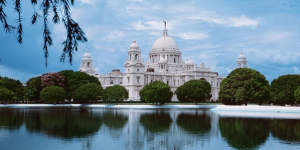 Kolkata was formerly called Calcutta. It is a heritage city. Before independence, British ruled so the city had a lot of British victorian architecture around the city. There are still old buildings, monuments, offices, churches, etc all in victorian design. The city is famous for its yellow ambassador taxis as well. Trams were the main means of transport that ran around the city. There are still old trams seen today running in selective parts of the city with a very cheap fare. Hand pulling rickshaws are also found in Kolkata. There are so many streets which are named after Victorian/British names and personalities. For example, Sir Stuart Hogg Market, Charlie Chaplin Road etc. Kolkata has the biggest race course. Horse races are often organized.
Kolkata was formerly called Calcutta. It is a heritage city. Before independence, British ruled so the city had a lot of British victorian architecture around the city. There are still old buildings, monuments, offices, churches, etc all in victorian design. The city is famous for its yellow ambassador taxis as well. Trams were the main means of transport that ran around the city. There are still old trams seen today running in selective parts of the city with a very cheap fare. Hand pulling rickshaws are also found in Kolkata. There are so many streets which are named after Victorian/British names and personalities. For example, Sir Stuart Hogg Market, Charlie Chaplin Road etc. Kolkata has the biggest race course. Horse races are often organized.
- Howrah Bridge
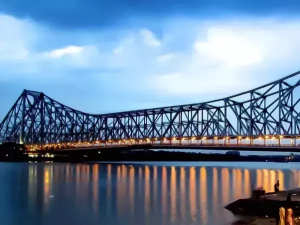
This bridge is the Rabindra Setu bridge which was made with steel and has no support. It just goes across t he river Ganges.
- The socio-cultural background of people is rich in dance, drama, films, theaters, recitation, painting, writing and several other endeavours. Kolkataans constitute a majority of the intellectuals in India. Thus the quality of extra-curricular education apart from core academics is much better.
- Lifestyle in Kolkata is very easy and low-cost unlike the other Metro-cities of India. The morning “adda” (chatting) in the local tea stall with the morning tea, is a popular thing here.
- Be it the morning walk along the Victoria Memorial or be it the betting on the turf-course or be it remaining stranded in the traffic jams of Howrah Bridge, people of Kolkata find a way of happiness.
- Availability of food at only 10 to 20 bucks makes living easier for the poor and unemployed. People, here, have somehow found happiness in living the moments despite the possible uncertainties of life.
- We even find very poor people living peacefully in-spite of lacking all the materialistic pleasures! Small kids, innocent faces – laughing and playing on the streets. They have found joy quintessentially.
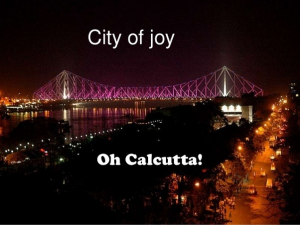 When Durga puja comes, people gather from every sphere of life here in Kolkata, they come in huge numbers from the other states also, only to enjoy the fantastic moments of festivities. The long queues of the Puja Pandals lets people of every status-quo stand together and share moments of happiness. There lies the subtle beauty of Kolkata. Its festivities have always shown the “Unity in diversity” along with the pomp and grandeur of the arrangements.
When Durga puja comes, people gather from every sphere of life here in Kolkata, they come in huge numbers from the other states also, only to enjoy the fantastic moments of festivities. The long queues of the Puja Pandals lets people of every status-quo stand together and share moments of happiness. There lies the subtle beauty of Kolkata. Its festivities have always shown the “Unity in diversity” along with the pomp and grandeur of the arrangements.- Kolkata is simply a marvelous place, it has an almighty power of amalgamating every people from all kinds of socio-religious backgrounds… Communal harmony is another point of pride for Kolkata. Certainly, it is a City of Joy.
- Last, but not the least, Kolkataans are fond of good music, they have a good taste of music! Good music, good songs soothes the mind, it ends the turmoils and calms the mind down, it’s a perfect healing.
KOLKATA is always rich in the quality of people living here, who lead life in euphoria, they have made this THE CITY OF JOY.
Jute

Jute is a long, soft, shiny Bast fiber that can be spun into coarse, strong threads. It is produced primarily from plants in the genus Corchorus, which was once classified with the family Tiliaceae. The primary source of the fiber is Corchorus olitorius, but it is considered inferior to Corchorus capsularis.”Jute” is the name of the plant or fiber used to make burlap, hessian or gunny cloth.
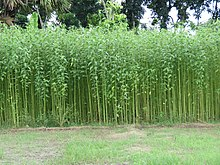
Jute is one of the most affordable natural fibers, and second only to cotton in the amount produced and variety of uses. Jute fibers are composed primarily of the plant materials cellulose and lignin. It falls into the bast fiber category (fiber collected from bast, the phloem of the plant, sometimes called the “skin”) along with kenaf, industrial hemp, flax (linen), ramie, etc. The industrial term for jute fiber is raw jute. The fibers are off-white to brown, and 1–4 metres (3–13 feet) long. Jute is also called the golden fiber for its color and high cash value.
The jute plant needs a plain alluvial soil and standing water. The suitable climate for growing jute (warm and wet) is offered by the monsoon climate, during the monsoon season. Temperatures from 20˚C to 40˚C and relative humidity of 70%–80% are favourable for successful cultivation. Jute
requires 5–8 cm of rainfall weekly, and more during
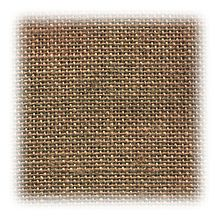
Jute matting is used to prevent flood erosion while natural vegetation becomes established. For this purpose, a natural and biodegradable fiber is essential.
Jute is the second most important vegetable fiber after cotton due to its versatility. Jute is used chiefly t o make cloth for wrapping bales of raw cotton, and to make sacks and coarse cloth. The fibers are also woven into curtains, chair coverings, carpets, area rugs, hessian cloth, and backing for linoleum.the sowing time. Soft water is necessary for jute production.
Cotton

Cotton is a soft, fluffy staple fiber that grows in a boll, or protective case, around the seeds of the cotton plants of the genus Gossypium in the mallow family Malvaceae. The fiber is almost pure cellulose. Under natural conditions, the cotton bolls will increase the dispersal of the seeds.
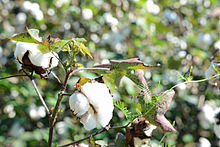
The fiber is most often spun into yarn or thread and used to make a soft, breathable textile.
Cotton is used to make a number of textile products. These include terrycloth for highly absorbent bath towels and robes; denim for blue jeans; cambric, popularly used in the manufacture of blue work shirts (from which we get the term “blue-collar”); and corduroy, seersucker, and cotton twill. Socks, underwear, and most T-shirts are made from cotton. Bed sheets often are made from cotton. Cotton also is used to make yarn used in crochet and knitting. Fabric also can be made from recycled or recovered cotton that otherwise would be thrown away during the spinning, weaving, or cutting process. While many fabrics are made completely of cotton, some materials blend cotton with other fibers, including rayon and synthetic fibers such as polyester.
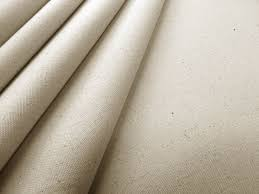
It can either be used in knitted or woven fabrics, as it can be blended with elastine to make a stretchier thread for knitted fabrics, and apparel such as stretch jeans. Cotton can be blended also with linen producing fabrics with the benefits of both materials. Linen-cotton blends are wrinkle resistant and retain heat more effectively than only linen, and are thinner, stronger and lighter than only cotton.
RPET

Kariwala Industries is volunteering to clean up the oceans by intertwining RPET with its purpose of doing business. RPET Cotton Blended fabrics are being sourced to make sustainable garments and bags. The bulk of the ocean trash comes from the problem of the lack of recycling and reusing of material that can be recycled, especially plastic. Not only does it affect the ocean and destroys its biodiversity, but also dents the economy as the production of new materials becomes costly. RPET is the solution to both of these problems.RPET has recycled polyethylene terephthalate which is used in cloth fibres, containers, thermoforming and more. This material, commonly known as PET is one of the most common consumer plastics. One very common use: plastic bottles. That’s right. The legendary plastic polluter. Luckily PET bottles are on the top of the list of the most commonly recycled products made with RPET. So, the next time you toss out that bottle, think of all the things that could be made out of the simple water container you hold in your hand.
